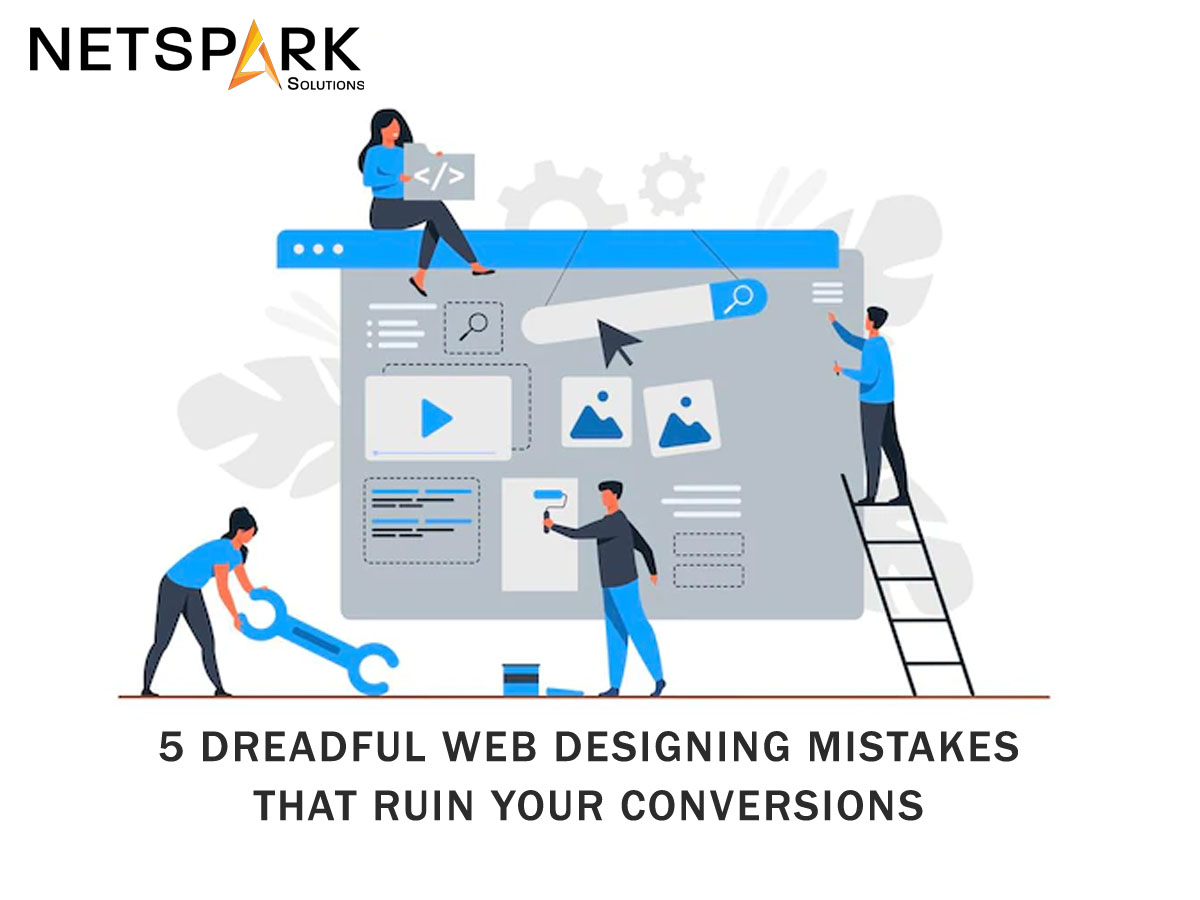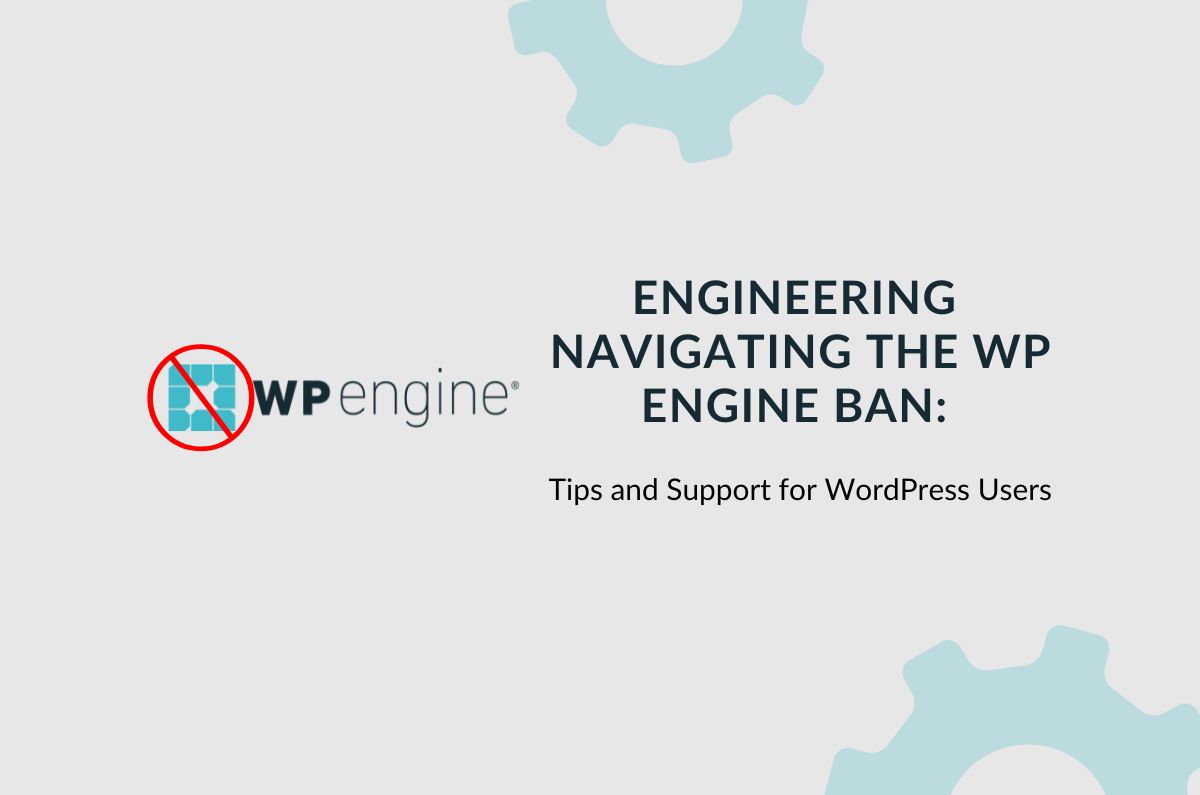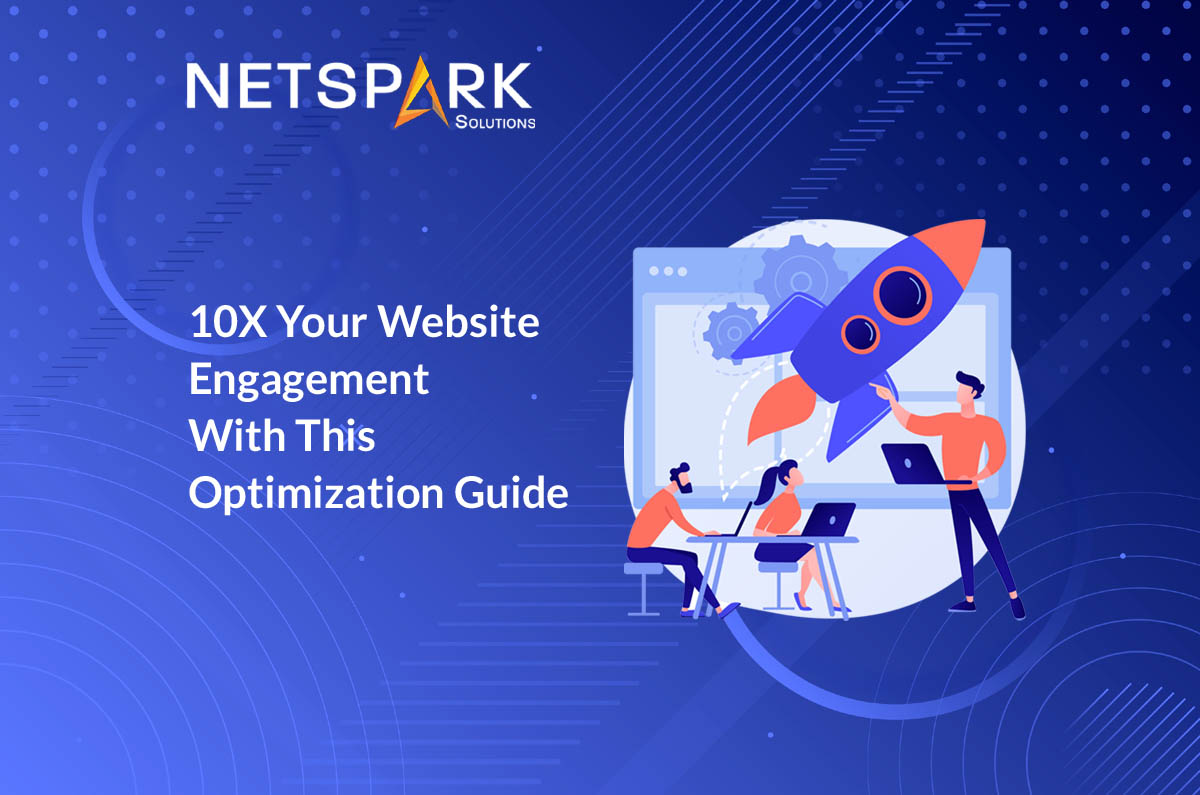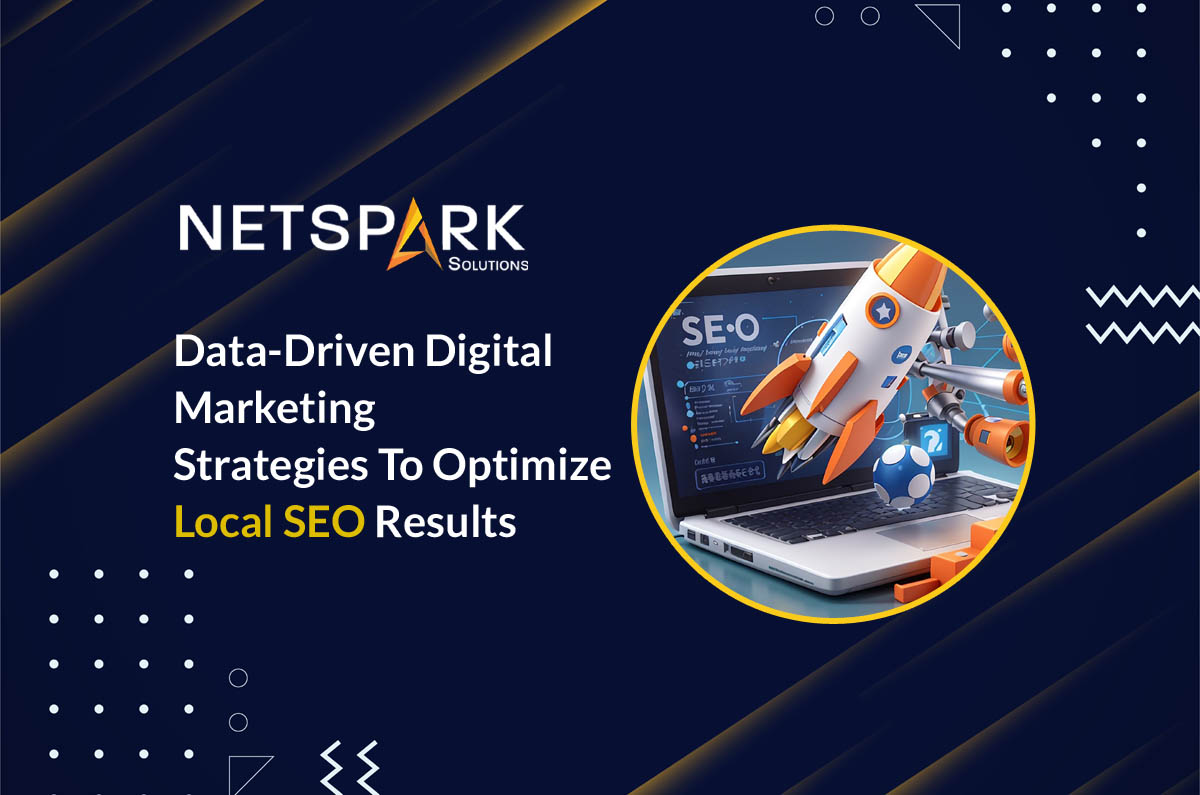5 Dreadful Web Designing Mistakes that Ruin Your Conversions
Good conversions are the ultimate goal of any website owner. Unfortunately, many businesses fail to get the desired conversions, despite having a fully functional website to represent their brand in the digital world.
The truth is having a website is not enough, especially when your goal is to convert customers. It’s also crucial to optimize the website’s performance to ensure it has the power to engage your potential visitors.
One of the major reasons behind poor conversions of a website is the lack of user-friendliness, which ultimately results in a bad first impression. Many business owners do not update their website’s design with time and end up losing the most valuable customers. An easy way to avoid this situation would be to validate the most common web designing mistakes and avoid them to keep your website’s conversions up to the mark.
In this blog, we’ll walk you through the most dreadful web designing mistakes that posses a huge threat to your overall conversion rate and can damage user engagement.
What are Conversions and Why They are Important?
Conversions can be defined as different actions that your website visitors take against a specific CTA (call-to-action) button placed on your website.
Let’s see you want to encourage people to shop from your online store or maybe get more people to subscribe to your newsletter or simply get more downloads on your ebooks! When the visitors will respond to these requests, they’ll automatically be considered as conversions.
Now, conversions are usually measured via a metric known as conversion rate. To define it in simple words, conversion rate the percentage of people who take the desired action tCo the total number of people who see the particular CTA.
Conversion Rate = (Number of Users Who Click on the CTA/Number of Users Who See the CTA)x100
So, why should businesses care about the conversion rate. Well, the answer is pretty simple. Conversions decide the success of your brand. The more people you convert by getting them to complete a particular action, the more revenue you’ll automatically generate in the end. That’s the reason why all brands and marketing experts strive to improve their conversions.
5 Web Designing Mistakes that Ruin Your Brand’s Overall Conversions
Now that you’re familiar with conversion rate and its significance in the digital world, let’s take a look at the most common web design mistakes that are restricting you from getting the desired conversions.
1. Lack of Proper Navigation
One of the golden rules of building a user-friendly website is having a clear navigation so that users could navigate through different pages easily. Customers should not feel clueless after landing on your home page. Instead, you would want to follow a design scheme that lets users navigate and find the desired page within a few seconds.
The general thumb rule says that it should not take more than 3-clicks for a user to reach the desired page on a website. Whether you run an ecommerce store or a service-based website, having a proper navigation will only improve the overall user experience and make it easier to convert more leads.
So, how do you make a website easy-to-navigate?
The most convenient way to get the job done is with a dedicated navigation bar. Placing aa navigation bar at the top of your website will give you the liberty to divide all the web pages into dedicated categories/sub-categories and make it easier for the visitors to locate the desired web page.
Another way to make your website more navigable is to remove the unnecessary clutter so that all the links are easily visible. A cluttered web page often makes it challenging for users to navigate through different pages, which eventually results in poor navigation.
2. Not Optimizing Website for Different Screen Sizes
These days, users aren’t just limited to accessing a website on their desktop. They have all sorts of devices including laptops, smartphones, foldable phones, and tablets that can be used to to browse websites.
In such a scenario, optimizing your website for a single screen size won’t be enough. It would be crucial to design the website in such a way that it delivers a consistent user experience across all devices, irrespective of their screen sizes.
The best way to achieve this goal is to choose a responsive theme while designing your website. If you don’t know this already, a responsive theme automatically adjusts the dimensions of a website according to the screen size. This means that the layout automatically changes based on the screen the website is being viewed on.
A responsive theme will also enhance your website’s mobile-friendliness and push your website’s search engine rankings as mobile-friendliness is one of the most crucial ranking factors Google considers to index and rank web pages. In short, optimizing your website for multiple screen sizes will improve its engagement and help you drive more conversions.
3. Poor Selection of Images
The images that you use on your website say a lot about your brand’s digital identity. You would not want to push away your potential customers by adding low-quality images to your website. Instead, try to upload high-quality pictures across all the web pages so that the overall website looks visually engaging.
Keep in mind that it’s also crucial to choose images that match the overall color scheme of your website. If the contrast of the pictures do not match the website’s theme, it won’t look elegant at all and cost you valuable clientele.
So, whenever you are uploading pictures to your website, make sure to optimize them properly. Apart from choosing visually appealing pictures, you must also compress their size so that they don’t slow down the page loading speed.
To engage customers more conveniently, you can also perform A/B testing to test out different versions of an image and choose the one that best engages the website visitors. In any case, optimizing the images on your website will boost the overall engagement and help you retain visitors more effectively.
4. Adding Too Many Banners
Here’s the deal; your website isn’t a hoarding where you can advertise your brand. Instead, it’s a platform that gives you the opportunity to connect with potential customers and convert them into long-term clients.
That’s why you should never unnecessarily stack your web pages with too many banners. Adding too many banners will look like a sales pitch and you’ll end up irritating the customers.
So, make sure to use the banners the right way so that they don’t push away the customers. Ideally, you should not place more than 1-2 banners on each web page. And, these banners should have proper overlapping of text and images so that they can visually engage visitors and encourage them to spend more time on your website.
5. Poorly Placed CTAs
There’s no arguing the fact that CTAs have a huge impact on your website’s conversions. After all, a conversion only occurs when a user clicks on one of the CTAs placed on your website. So, you can’t compromise with the placement and strategy behind your website’s call-to-actions.
It’s worth understanding that randomly placing CTAs across different pages on your website could wreak havoc on your final conversion rates. Why? Because they won’t attract the desired number of clicks and you won’t be able to surpass the threshold. That’s why marketing experts always put in their best efforts to decide the placement and message of CTAs.
If you want to achieve the best results, it would be better to follow the same approach with your website. Before placing each CTA, make sure to validate its impact on the user experience. If there’s a slight chance that this call-to-action might damage website’s usability, change its position instantly.
Like everything else, experimenting with the CTAs will give you a clear vision about what works for your target audience. Over time, you’ll be able to add the right CTAs and get instant conversions more effectively.
The Bottom Line
Poor website conversions are the biggest nightmare of any business owner. Entrepreneurs and industry leader do not want to struggle with poor conversions. That’s why it’s crucial to optimize your website’s design and other elements so that it can easily engage the visitors and convert them into long-term clients.
Moreover, if you want to achieve the best results, it’ll be crucial to avoid common pitfalls. The above-mentioned mistakes are only a few of the blunders you can make while designing a website. That’s why it’s always advised to hire a team of expert designers who have diverse expertise in web designing and can help you build user-centric websites to achieve better conversions.
At NetSpark Solutions, we offer advanced web designing and web development services to help enterprises strengthen their digital presence. Get in touch with our industry experts and we’ll help you avoid such common designing mistakes and stay on the right path while building a website.











